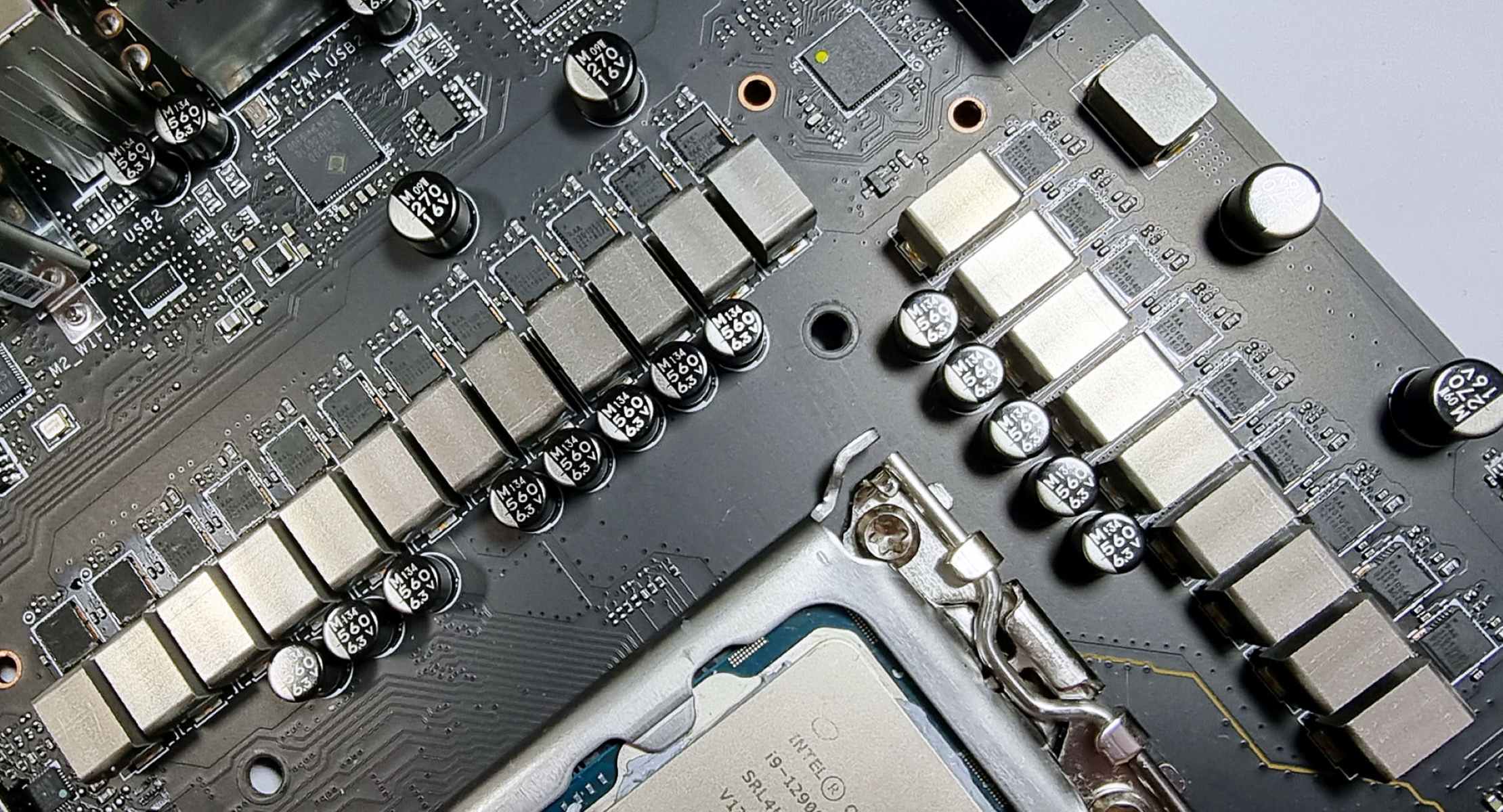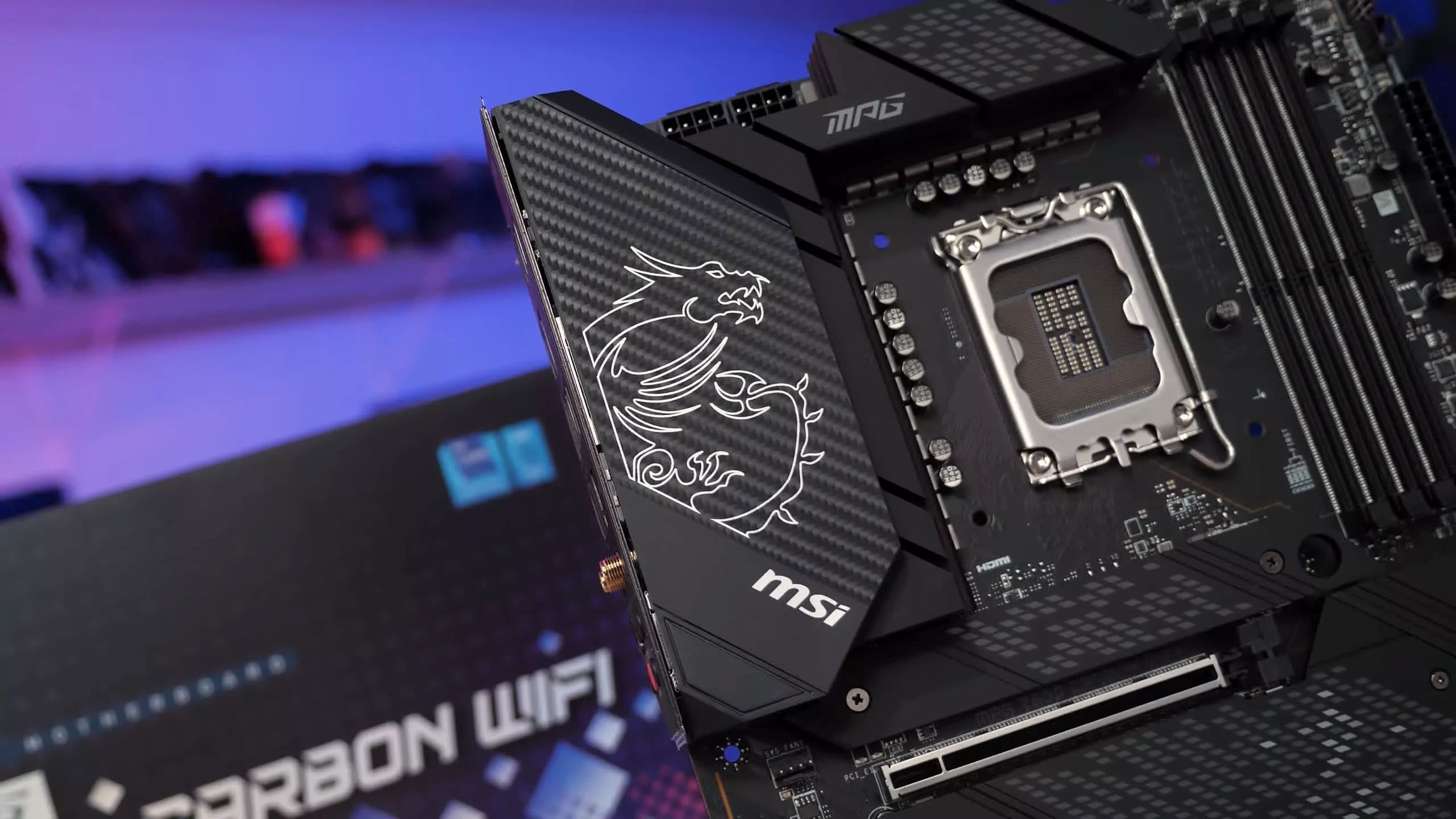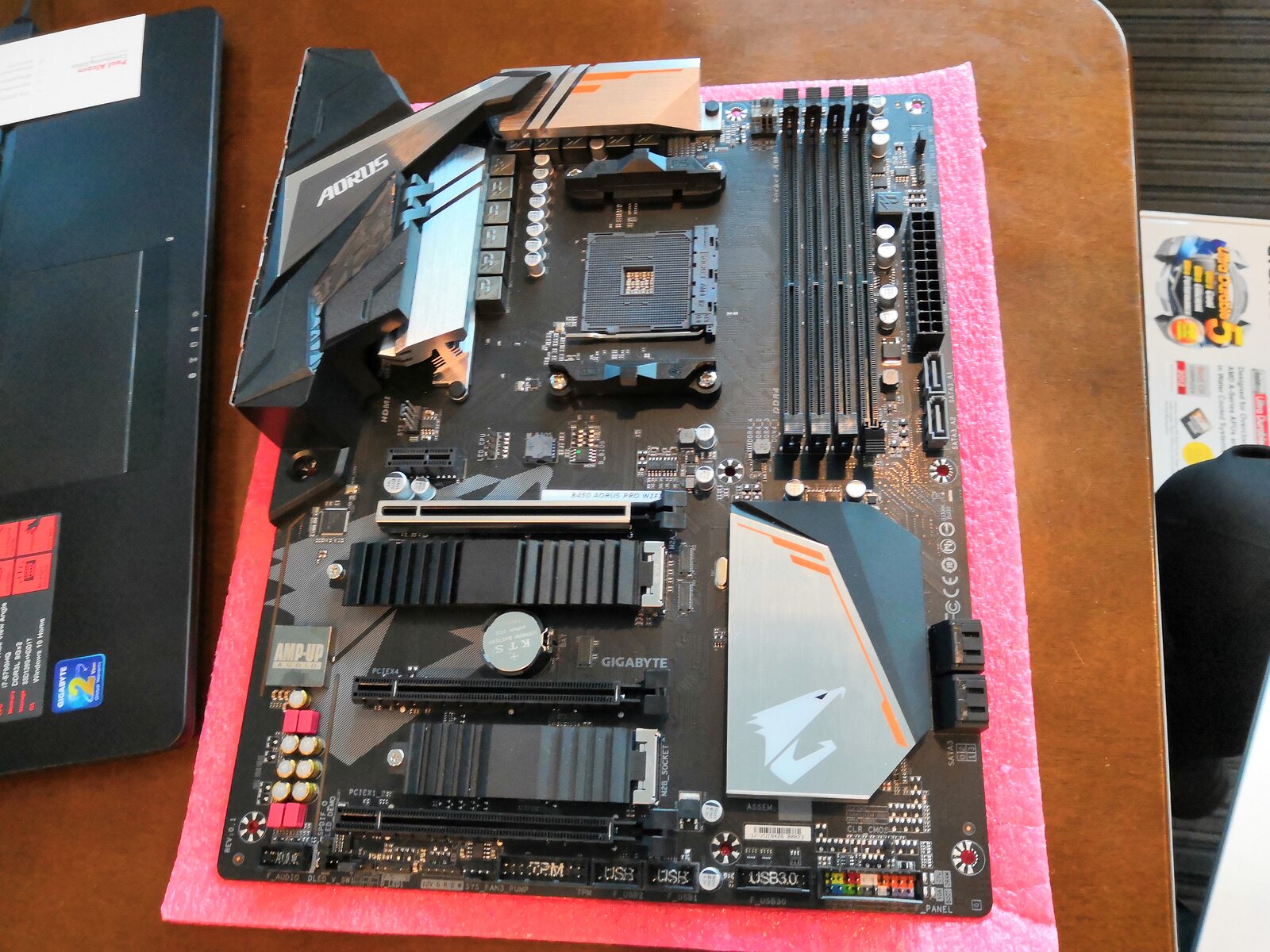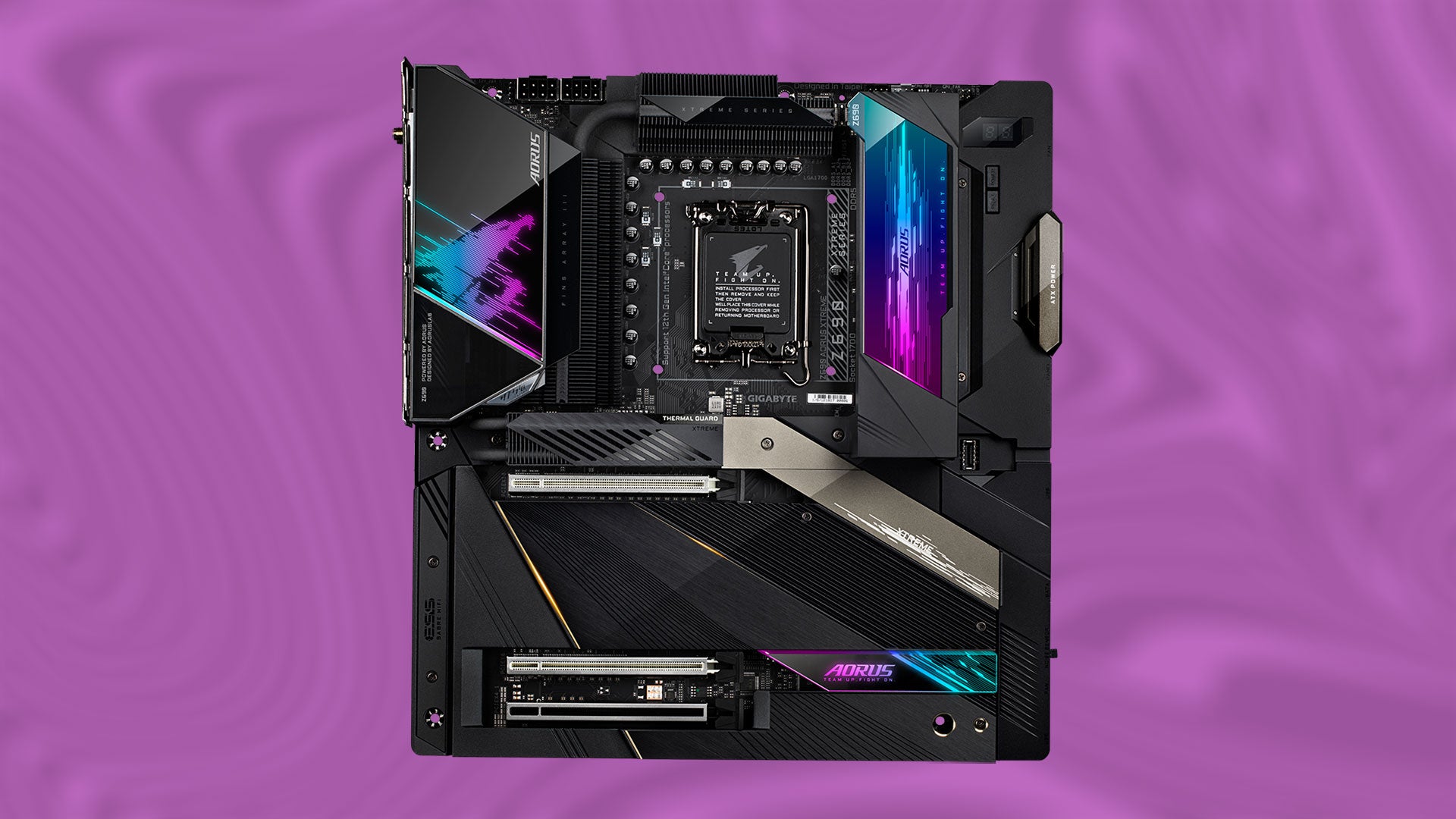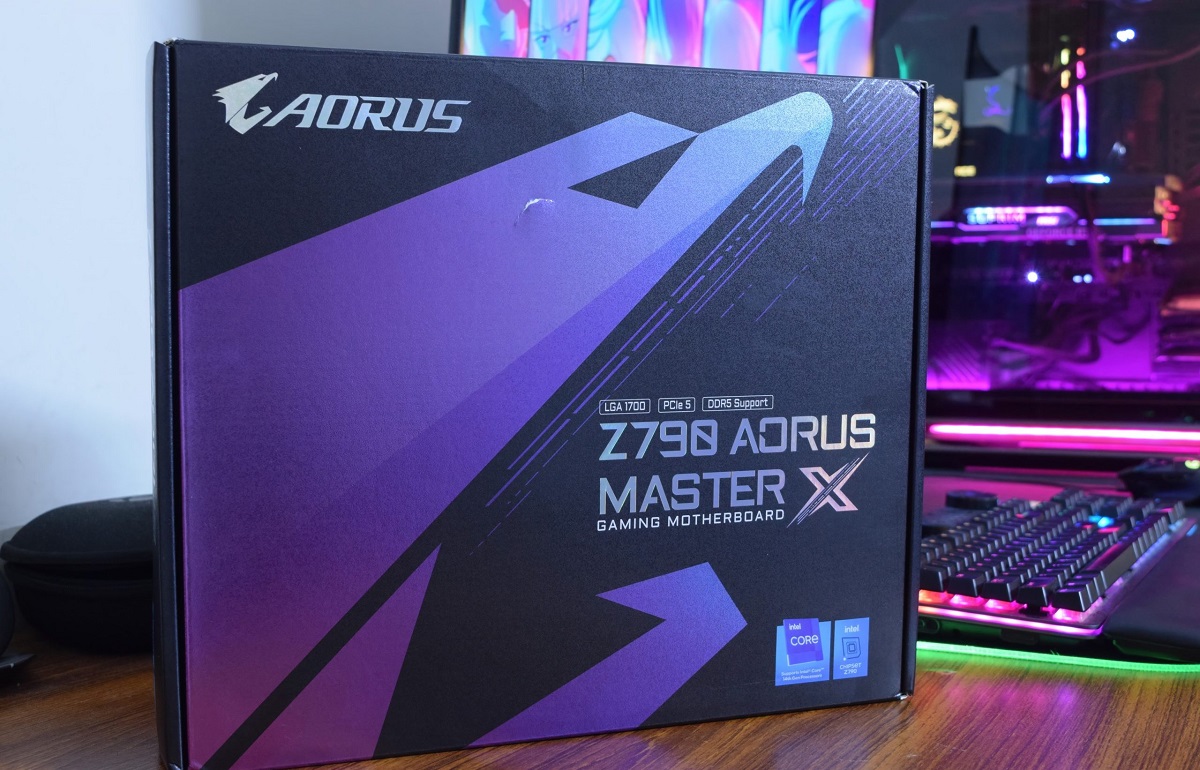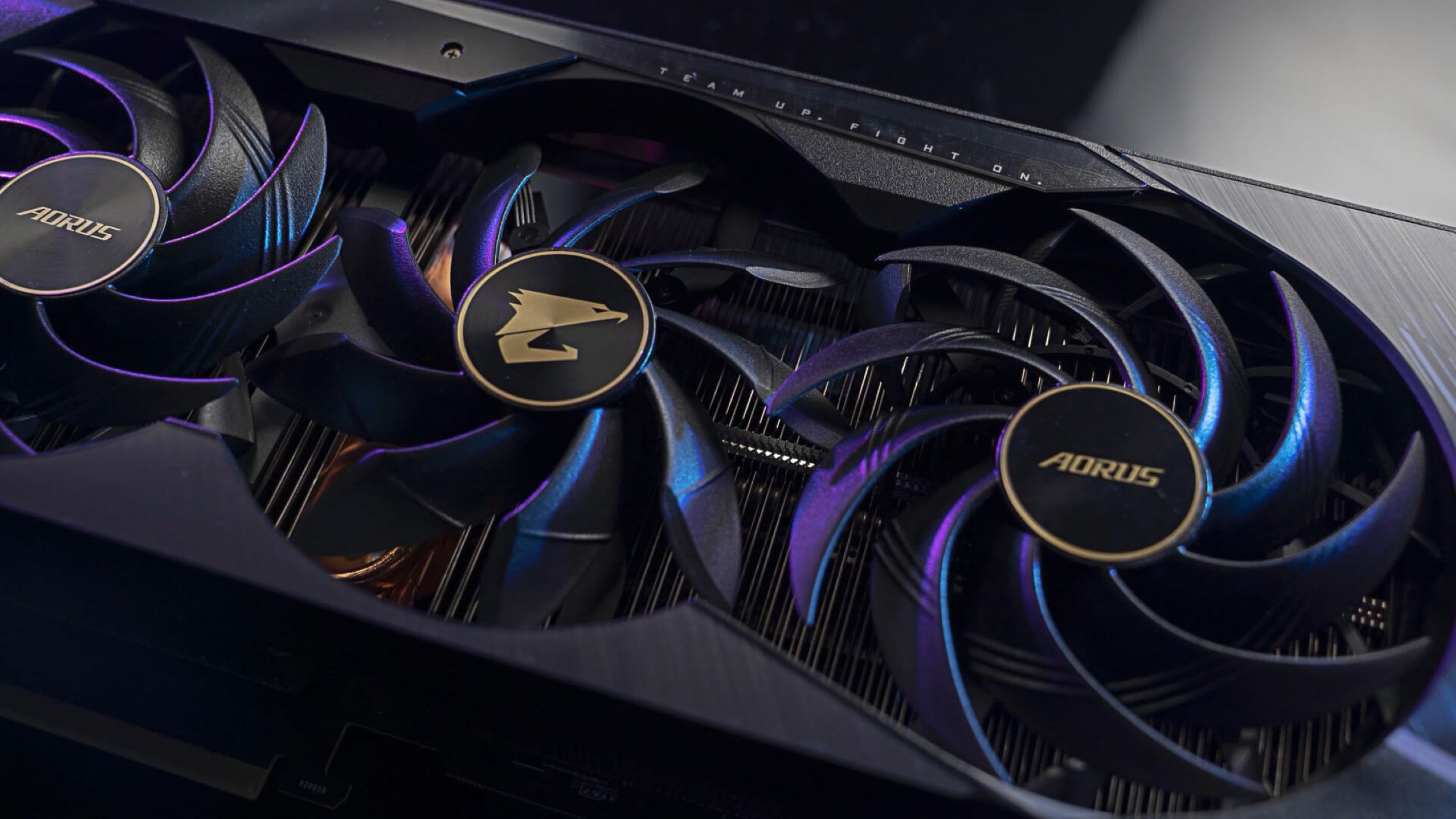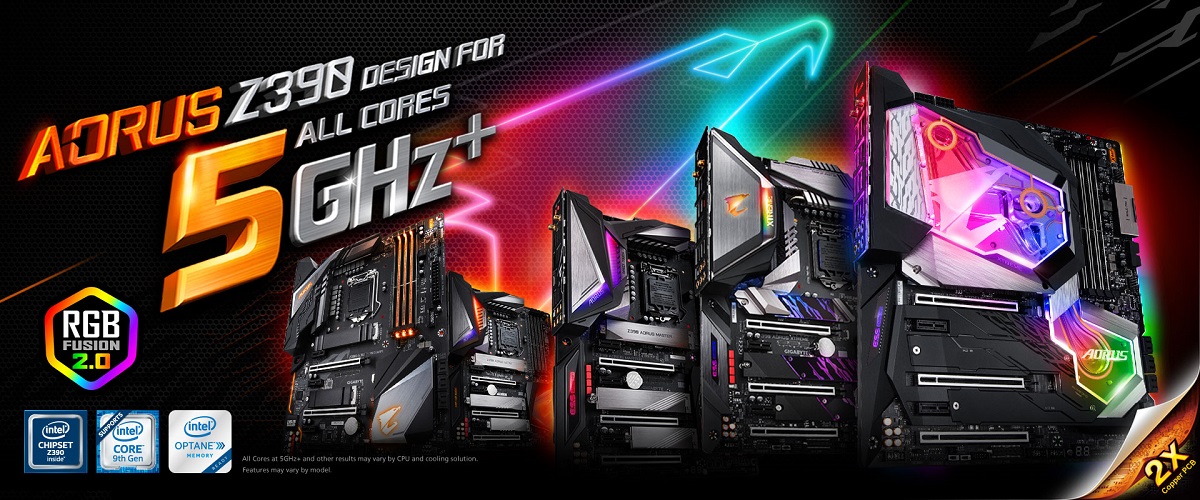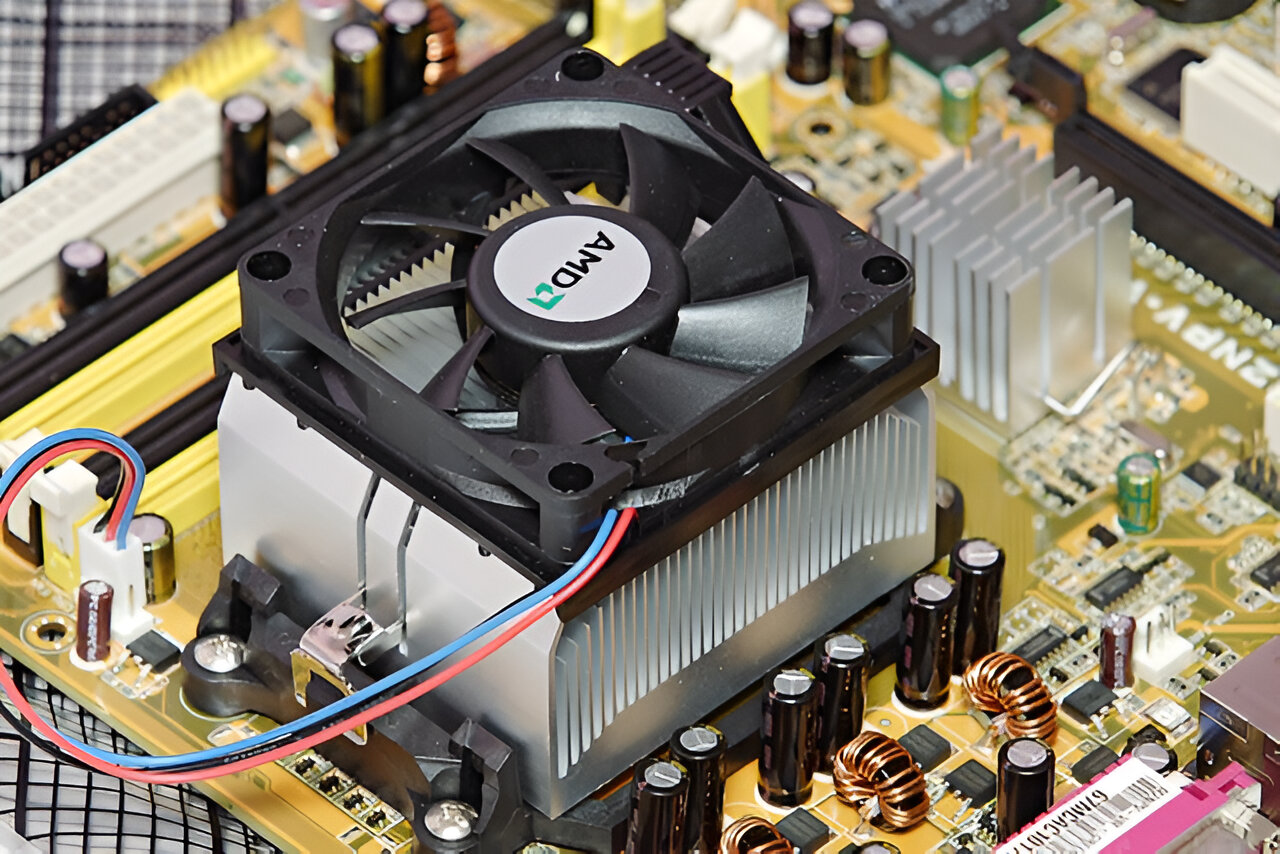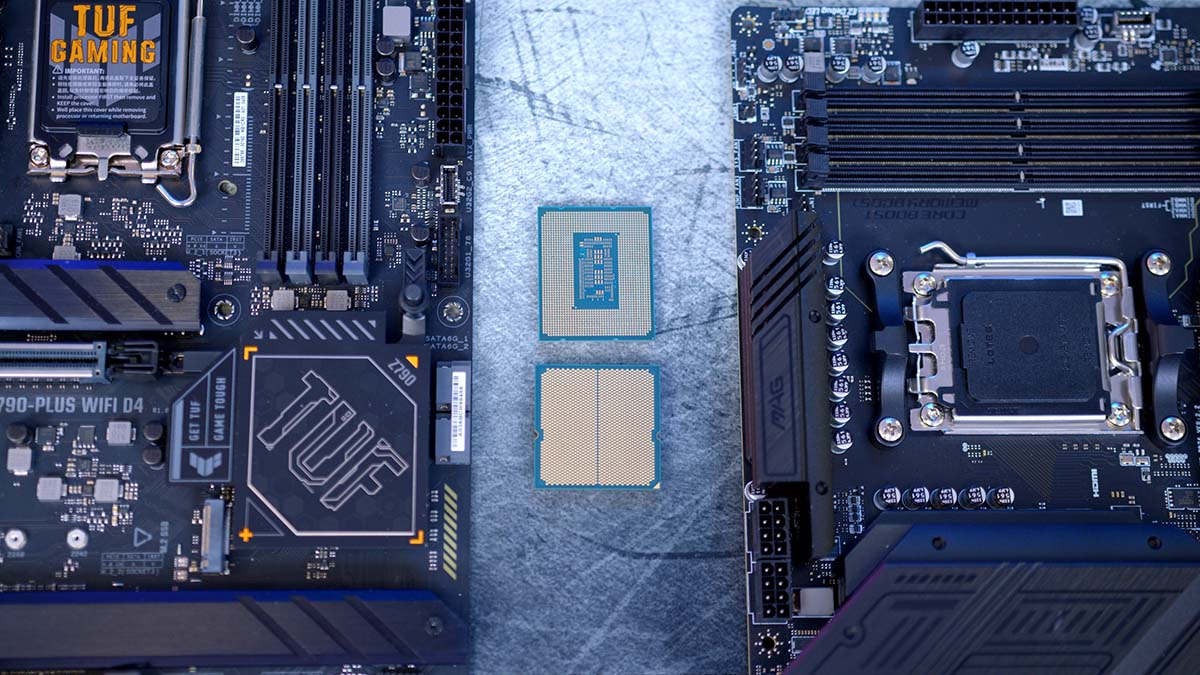Introduction
Welcome to the world of motherboards and their complex components! If you have ever wondered what makes a motherboard tick and how it efficiently manages power delivery, then you’re in the right place. In this article, we will delve into the realm of VRM (Voltage Regulator Module) and its significance in motherboard functionality.
VRM, although not a household term among non-tech enthusiasts, plays a crucial role in ensuring stable and reliable power supply to the central processing unit (CPU). By regulating the voltage and converting it to the required levels, VRM safeguards your motherboard and CPU from potential damage caused by power surges and fluctuations.
In this article, we will explore the key components of VRM, how it works, and its importance in the overall performance of your motherboard. We will also discuss common issues associated with VRM and factors to consider when choosing a motherboard with robust VRM capabilities. So, let’s dive into the fascinating world of VRM and unravel its mysteries!
What is VRM?
VRM, short for Voltage Regulator Module, is a vital component found on modern computer motherboards. Its primary function is to regulate and control the voltage supplied to the central processing unit (CPU) and other critical components of the motherboard.
The VRM acts as a power management system, taking the high voltage provided by the power supply unit (PSU) and converting it to the precise voltage required by the CPU for optimal performance. This conversion process ensures that the CPU receives a stable and consistent power supply, preventing damage from voltage spikes and fluctuations.
VRMs come in different designs and configurations, depending on the specific motherboard model and CPU requirements. The most common type of VRM is known as a Buck converter, which steps down the voltage from the PSU to the desired level. Some high-end motherboards may also feature multiphase VRMs, which use multiple power phases to ensure better power delivery and efficiency.
It’s important to note that VRMs are not only found on desktop computer motherboards but also on server boards and high-performance laptops. Regardless of the form factor, the role of the VRM remains the same – to provide stable power to the CPU and enhance overall system performance.
In summary, VRM is a critical component found on motherboards that regulates and converts the voltage supplied to the CPU and other vital components. By ensuring a stable power supply, VRM plays a crucial role in maintaining the integrity of the motherboard and maximizing the performance of your computer system.
What does VRM do on a motherboard?
The VRM, or Voltage Regulator Module, is an essential component on a motherboard that performs several crucial functions related to power delivery. Let’s take a closer look at what the VRM does:
- Voltage Regulation: The primary role of the VRM is to regulate the voltage supplied to the CPU and other components on the motherboard. It ensures that the power supplied to the CPU is consistent, stable, and within the required voltage range. This regulation is vital for the proper functioning and longevity of the CPU, as voltage fluctuations can lead to instability and even damage.
- Voltage Conversion: The VRM converts the high voltage received from the power supply unit (PSU) into the specific voltage levels needed by the CPU and other components. Different components require different voltages, and the VRM ensures that each receives the precise voltage required for optimal performance and energy efficiency.
- Power Phases: Many VRMs feature multiple power phases, also known as PWM (Pulse Width Modulation) phases. Each power phase delivers power to a specific part of the motherboard or CPU. These phases work in tandem to provide a more efficient power delivery system, distributing the load evenly and reducing heat buildup.
- Overcurrent Protection: The VRM incorporates protective mechanisms to safeguard the motherboard and CPU from potential damage due to overcurrent situations. In the event of a power surge or short circuit, the VRM can detect the abnormal current flow and shut down the power supply, preventing any harm to the components.
- Thermal Management: As VRMs convert and regulate power, they generate heat. To prevent overheating, VRMs are equipped with heatsinks or cooling mechanisms to dissipate the heat efficiently. Proper thermal management is crucial for maintaining the stability and longevity of the VRM and the components it powers.
In summary, the VRM on a motherboard performs vital functions such as voltage regulation, voltage conversion, power phase distribution, overcurrent protection, and thermal management. These functions ensure stable power delivery to the CPU and other components, optimizing performance and protecting against potential damage from voltage fluctuations or electrical anomalies.
Components of VRM
The Voltage Regulator Module (VRM) consists of several key components that work together to regulate and deliver the proper voltage to the CPU and other components. Let’s explore the essential components of the VRM:
- MOSFETs (Metal-Oxide-Semiconductor Field-Effect Transistors): MOSFETs are the primary switching devices in the VRM. They control the flow of voltage and current from the power supply to the CPU and other components. MOSFETs are essential for efficient power conversion and play a critical role in regulating voltage levels to ensure stability and performance.
- Inductors: Inductors store energy in the form of a magnetic field and are crucial for smooth power delivery. They work in conjunction with capacitors to filter out noise and maintain a continuous and consistent supply of power. Inductors help reduce voltage ripple and stabilize the overall voltage output of the VRM.
- Capacitors: Capacitors store electrical charge and release it when needed. They act as a buffer to ensure a steady flow of current and help maintain stable voltage levels. Capacitors in the VRM provide the instantaneous power required by the CPU during sudden load changes, preventing voltage droop and maintaining system stability.
- PWM Controller: The Pulse Width Modulation (PWM) controller is responsible for dynamically adjusting the voltage output of the VRM based on the CPU’s power demands. It receives feedback from the CPU to determine the appropriate voltage level and controls the MOSFETs accordingly. The PWM controller ensures efficient power management and optimal performance.
- Heat Sink: As the VRM operates and converts power, it generates heat. Heat sinks are attached to the MOSFETs or other VRM components to dissipate the heat and maintain proper operating temperatures. Effective heat sink design is crucial for preventing overheating and prolonging the lifespan of the VRM.
- VRM Controller: The VRM controller is a microchip that acts as the brain of the VRM. It coordinates and controls the various components of the VRM to ensure proper voltage regulation and power delivery. The VRM controller communicates with the PWM controller, monitors temperature and voltage levels, and adjusts settings as needed to maintain system stability.
In summary, the components of the VRM, such as MOSFETs, inductors, capacitors, PWM controller, heat sink, and VRM controller, work together to regulate and deliver the appropriate voltage to the CPU and other components. Each component plays a critical role in maintaining stability, efficiency, and overall performance of the motherboard.
How does VRM work?
The Voltage Regulator Module (VRM) is a vital component on a motherboard that plays a crucial role in regulating and converting the voltage supplied to the central processing unit (CPU). Let’s understand how the VRM works:
1. Voltage Conversion: The VRM receives a higher voltage from the power supply unit (PSU) and converts it into the specific voltage levels required by the CPU. This conversion is accomplished through a combination of MOSFETs (Metal-Oxide-Semiconductor Field-Effect Transistors), inductors, and capacitors. The MOSFETs act as switches, controlled by the PWM (Pulse Width Modulation) controller, to regulate the flow of current and voltage.
2. Power Phases: Many VRMs consist of multiple power phases, each providing power to a specific part of the CPU or motherboard. This division of power into separate phases allows for more efficient power delivery and reduced heat generation. The PWM controller ensures that the power phases work together harmoniously, distributing the load evenly and preventing voltage droop or spikes.
3. Voltage Regulation: The VRM constantly monitors the voltage requirements of the CPU and adjusts the voltage output accordingly. The PWM controller receives feedback from the CPU and adjusts the switching frequency of the MOSFETs to maintain stable voltage levels. This regulation ensures that the CPU receives a consistent and reliable power supply, minimizing the risk of instability or damage.
4. Heat Dissipation: As the VRM operates and converts power, heat is generated. To prevent overheating and maintain optimal performance, VRMs are equipped with heat sinks. These heat sinks are designed to dissipate the heat efficiently, ensuring that the VRM operates within the appropriate temperature range. Adequate cooling is vital for the longevity and reliability of the VRM and the overall system.
5. Protection Mechanisms: VRMs incorporate protective features to safeguard the motherboard and CPU from potential damage. Overcurrent protection is one such mechanism that detects abnormal current levels and shuts down the power supply to prevent harm to the components. Additionally, thermal protection mechanisms monitor the VRM’s temperature and can throttle back the power delivery if it exceeds safe limits.
In summary, the VRM on a motherboard converts, regulates, and delivers the proper voltage to the CPU. It accomplishes this through voltage conversion, power phase distribution, voltage regulation, heat dissipation, and protective mechanisms. The VRM ensures that the CPU receives stable and reliable power, optimizing performance and protecting against potential damage from voltage fluctuations or overheating.
Importance of VRM in a motherboard
The Voltage Regulator Module (VRM) may be a small component on a motherboard, but its importance cannot be overstated. The VRM plays a critical role in ensuring the stability, longevity, and overall performance of the motherboard. Here are some key reasons why VRM is important:
1. Regulates Voltage: The VRM is responsible for regulating the voltage supplied to the CPU and other components. It ensures that the voltage remains within the specified range, preventing damage from voltage spikes or drops. Stable voltage is vital for the operation of the CPU as even slight fluctuations can lead to system instability, crashes, or even permanent damage.
2. Converts Voltage: The VRM converts the high voltage supplied by the power supply unit (PSU) into the precise voltage levels required by the CPU. Different components require different voltage levels, and the VRM ensures that each component receives the appropriate voltage. This conversion process enables efficient power consumption and reduces excess heat generated during power delivery.
3. Ensures Power Efficiency: By converting and regulating the voltage, the VRM helps optimize power efficiency. It delivers only the required amount of power to the CPU, minimizing energy wastage. This not only reduces the electricity bill but also helps in reducing heat and increases the overall lifespan of the components.
4. Protects Components: The VRM incorporates protective mechanisms to safeguard the motherboard and the CPU. It includes features such as overcurrent protection and thermal protection. Overcurrent protection detects abnormal current levels and shuts down power delivery, protecting the components from damage. Thermal protection monitors the temperature of the VRM and adjusts power delivery to prevent overheating.
5. Facilitates Stable Performance: A stable power supply ensures stable performance of the CPU and other components. The VRM plays a crucial role in maintaining a consistent power flow, preventing voltage droop or spikes that can disrupt the system’s stability. With a reliable VRM, the motherboard can provide a steady power supply to the CPU, ensuring smoother and more consistent performance.
6. Supports Overclocking: For enthusiasts who desire to push their CPUs to higher frequencies through overclocking, a robust VRM is essential. A well-designed VRM with sufficient power phases and efficient heat dissipation can handle the increased power demands of an overclocked CPU. This allows users to achieve their desired performance boost without compromising stability or risking damage to the hardware.
In summary, the VRM is an integral part of a motherboard that regulates and converts voltage, ensures power efficiency, protects components, facilitates stable performance, and supports overclocking. The VRM’s functionality significantly impacts the overall performance and lifespan of the motherboard and CPU, making it a crucial component for any computer system.
Common issues with VRM on motherboards
While the Voltage Regulator Module (VRM) is a vital component on a motherboard, it is not immune to certain issues that can affect its performance and reliability. Here are some of the common issues that can arise with VRMs on motherboards:
- Overheating: Poor thermal design or inadequate cooling can cause the VRM to overheat. This can lead to instability, system crashes, or even permanent damage to the VRM and other components. Overheating can be a result of insufficient airflow inside the computer case or excessive load on the VRM due to overclocking or high-power CPUs.
- Voltage Regulation Problems: VRMs may experience issues with voltage regulation, resulting in unstable voltage outputs. This can lead to system instability, crashes, or even damage to the CPU or other components. Incorrect voltage regulation can be caused by faulty components, insufficient power phases, or inadequate calibration of the VRM.
- Electromagnetic Interference (EMI): VRMs can generate electromagnetic interference that can interfere with other sensitive components on the motherboard, such as audio circuits or wireless communication modules. EMI can lead to reduced performance, audio distortions, or connectivity issues. Proper shielding and isolation techniques are necessary to mitigate this problem.
- Component Failure: Like any electronic component, VRMs can experience component failure due to various factors, including manufacturing defects, age, or power surges. A failed VRM can result in power delivery issues, system instability, or complete motherboard failure. Regular monitoring of VRM temperatures and voltages can help identify potential issues before they cause significant damage.
- Insufficient Power Phases: VRMs with an insufficient number of power phases may struggle to deliver power to high-performance CPUs or during heavy loads. This can result in voltage droop or inadequate power supply, leading to instability or reduced CPU performance. Motherboards with robust VRM designs and sufficient power phases are recommended for demanding CPU configurations.
- Compatibility Issues: Incompatibility between the VRM design and the specific CPU can lead to functionality problems. This can result in improper voltage regulation, unstable operation, or even system incompatibility. It is important to ensure that the motherboard’s VRM is designed to support the specific CPU model and power requirements.
It is worth noting that while these issues can occur, they are not necessarily common in all VRMs or motherboards. High-quality motherboards from reputable manufacturers often address these issues through careful design and rigorous testing. Regular maintenance, proper cooling, and adherence to manufacturer guidelines can help mitigate these issues and ensure reliable VRM performance.
Factors to consider when choosing a motherboard with VRM
When selecting a motherboard with a robust and efficient Voltage Regulator Module (VRM), there are several important factors to consider. The quality and capabilities of the VRM can greatly impact the stability, performance, and longevity of your computer system. Here are some factors to keep in mind:
- Power Phase Design: The number of power phases in a VRM can affect power delivery efficiency and heat generation. A higher number of power phases generally indicates better power distribution and reduced load on each phase. This is especially important for high-performance CPUs or overclocking scenarios where demanding power requirements are necessary.
- Quality of Components: The quality of the VRM’s components, such as MOSFETs, capacitors, and inductors, directly impacts performance and reliability. Higher-quality components tend to have better power delivery capabilities, higher efficiency, and better resistance to heat. It is advisable to choose motherboards from reputable manufacturers known for using quality components in their VRM designs.
- Thermal Design: Efficient heat dissipation is crucial for a reliable VRM. Look for motherboards that have proper heat sink designs or dedicated cooling solutions for the VRM. Effective thermal management helps maintain stable operation, enhances longevity, and reduces the risk of thermal throttling or component failure.
- CPU Compatibility: Ensure that the motherboard’s VRM is designed to support the specific CPU model or family you plan to use. Different CPUs have varying power requirements, and a compatible VRM design is essential for delivering stable voltage levels to the CPU. Consult the motherboard’s specifications or refer to manufacturer guidelines for CPU compatibility information.
- Overclocking Support: If you are interested in overclocking your CPU, choose a motherboard with a VRM that is specifically designed to handle increased power demands. Look for VRMs with higher power phase counts, robust cooling solutions, and features like additional power connectors to support stable overclocking without compromising system stability or longevity.
- User Reviews and Feedback: Research user reviews and feedback regarding the VRM performance of the motherboard you are considering. These insights can provide valuable information about real-world experiences with the VRM’s stability, power delivery capabilities, and heat dissipation. Pay attention to reviews from users with similar configurations and usage scenarios.
By considering these factors, you can ensure that the motherboard you choose has a VRM that meets your specific power requirements, provides stable voltage regulation, and supports the desired level of performance. Remember, investing in a motherboard with a reliable VRM is crucial for the long-term stability and performance of your computer system.
Tips for optimizing VRM performance on a motherboard
To ensure optimal performance and longevity of the Voltage Regulator Module (VRM) on your motherboard, consider implementing the following tips:
- Proper Cooling: Ensure that your motherboard’s VRM has sufficient cooling. Good airflow inside the computer case is essential for cooling the VRM components. Consider installing additional case fans or upgrading to a more efficient CPU cooler to help dissipate heat effectively.
- Maintain Adequate Airflow: Position your components and wiring in a way that promotes good airflow. This includes routing cables neatly, avoiding blocking air vents, and ensuring that there are no obstructions near the VRM heatsink. Proper airflow helps prevent hot spots and ensures efficient cooling for the VRM.
- Consider Motherboards with Dedicated VRM Cooling: Some high-end motherboards offer dedicated cooling solutions for the VRM, such as additional heatsinks or heat pipes. Consider opting for such motherboards as they provide enhanced thermal management, leading to improved VRM performance.
- Ensure Proper Power Supply: Use a high-quality power supply unit (PSU) that can provide stable and clean power to the motherboard. A reliable PSU will help maintain consistent voltage delivery to the VRM, reducing the risk of voltage fluctuations that can impact performance and stability.
- Avoid Overclocking beyond Recommended Limits: While overclocking can provide performance boosts, pushing the CPU and VRM beyond their recommended limits can lead to instability and possible damage. Stay within the recommended overclocking limits set by the motherboard manufacturer and ensure that the VRM can handle the increased power demands.
- Regularly Monitor VRM Temperature and Voltage: Utilize software utilities or hardware monitoring tools to keep an eye on the VRM temperature and voltage levels. Maintain an optimal temperature range and ensure that voltage levels remain within the designated specifications for stable VRM performance.
- Follow Manufacturer Guidelines: Always refer to the manufacturer’s guidelines and recommendations for using and maintaining the VRM. These guidelines often provide specific instructions and precautions that can help optimize VRM performance and ensure its longevity.
By implementing these tips, you can optimize the performance and reliability of the VRM on your motherboard. Effective cooling, proper airflow, adequate power supply, and adhering to manufacturer guidelines will help ensure stable voltage regulation, reduce heat buildup, and ultimately enhance the overall performance and lifespan of your system.
Conclusion
The Voltage Regulator Module (VRM) is a critical component on a motherboard that plays a crucial role in regulating and delivering the appropriate voltage to the CPU and other components. By converting and regulating the power supply, the VRM ensures stable performance, protects against power-related issues, and optimizes power efficiency. Understanding the importance of the VRM and considering key factors when choosing a motherboard can greatly impact the overall stability, performance, and longevity of your computer system.
Factors such as power phase design, component quality, thermal management, CPU compatibility, overclocking support, and user feedback should be carefully considered when selecting a motherboard with a reliable VRM. By choosing a motherboard that aligns with your specific needs and usage requirements, you can ensure optimal power delivery and stability.
To further enhance VRM performance, implementing tips such as proper cooling, maintaining adequate airflow, using a quality power supply, monitoring VRM temperature and voltage, and following manufacturer guidelines can significantly improve VRM efficiency and reliability.
In conclusion, the VRM on a motherboard is a vital component responsible for regulating and delivering stable voltage to the CPU. A well-designed and robust VRM enhances overall system stability, protects against power-related issues, and contributes to the longevity of the motherboard and CPU. By considering the importance of the VRM and implementing optimization techniques, you can maximize the performance and lifespan of your computer system.







